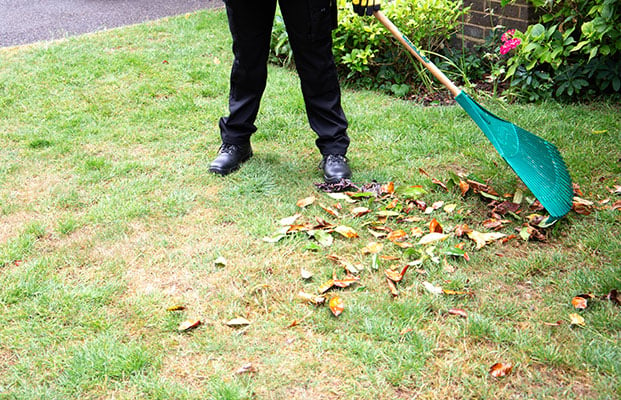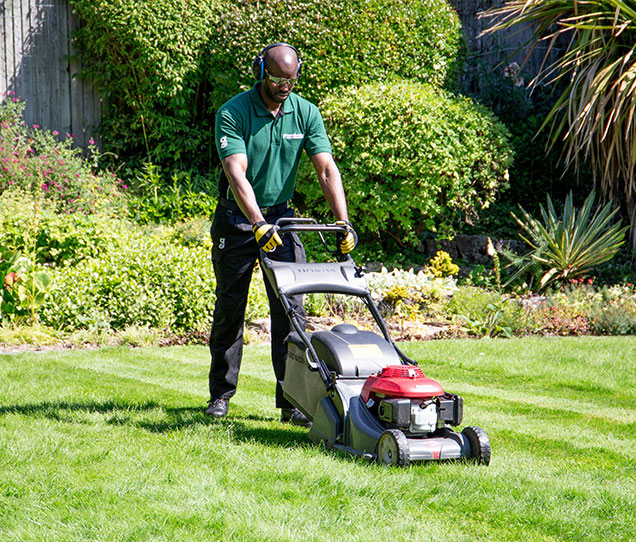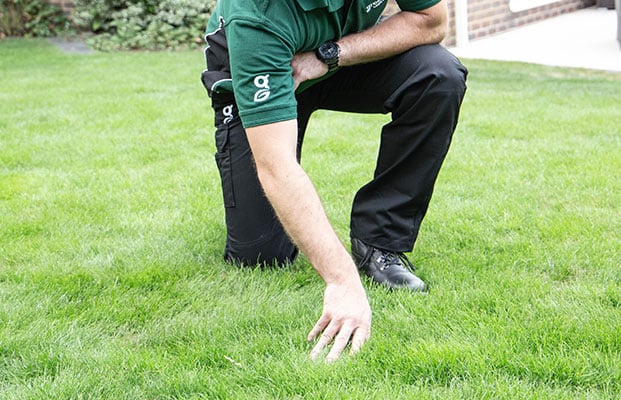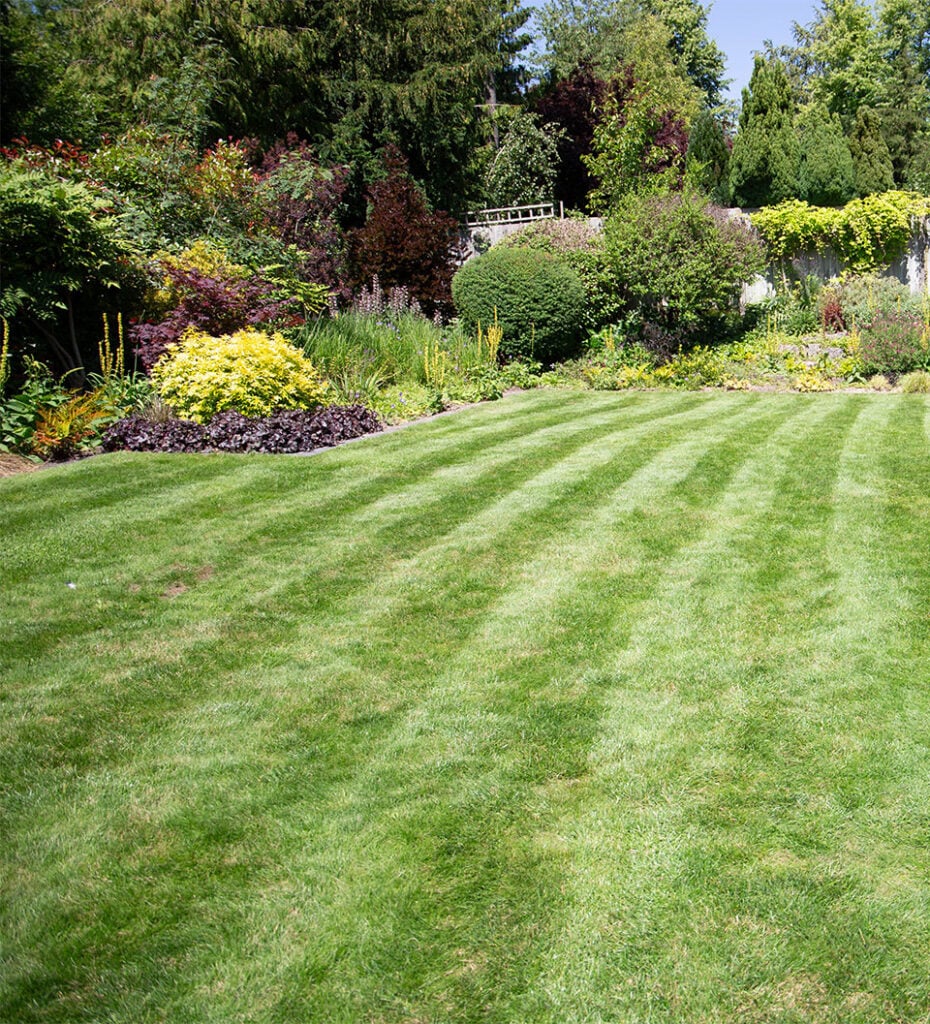
What causes mower damage?
Mower damage is any damage that is caused to a lawn by a lawn mower. This can include things like:
- Tearing or scalping: This is when the mower cuts too low and tears the grass blades or scalps the surface of the soil.
- Browning or yellowing: This can happen if the mower blades are not sharp enough or if the mower is not properly adjusted.
- Digging or gouging: This can happen if the mower blades hit a rock or other object.
- Leaves or debris: This can happen if the mower is not properly maintained and the blades are clogged with leaves or debris.

What types of mower should I use?
When deciding on the most appropriate lawnmower for your lawn, various factors should be considered:
- The size of your lawn
- The shape of your garden
- How even the ground is
- If your lawn is on a slope
- Ease-of-use requirements
Depending on your space, you could have a rotary mower, a hover mower, or a cylinder mower. Our lawn care experts can advise you on the best mower for your space and requirements.
Remember to keep your mower well maintained by cleaning grass clippings from the underside after use. Keep the mower blades sharp to ensure a nice, clean cut – essential to the health of the grass! It is also important to clean and oil your mower regularly to prevent damaging your lawn.
How often should I mow my lawn?

Cutting your lawn regularly at the correct height will encourage healthier growth from root to tip. The frequency with which you should mow your lawn depends on a number of factors, including the type of grass you have and how much sun your lawn gets. However, as a general rule, you should mow your lawn at least once per week during the main growing seasons of April to June and September to October.
In the winter, you’ll only need to mow your lawn once a month or less but don’t be frightened to mow when the ground isn’t too waterlogged or frozen!
Noticed mower damage to your lawn? We can help!
We are the UK's No1 most trusted
Excellent 4.8 / 5 based on 17,000+ reviews


